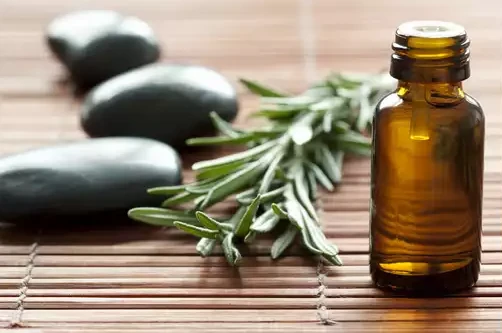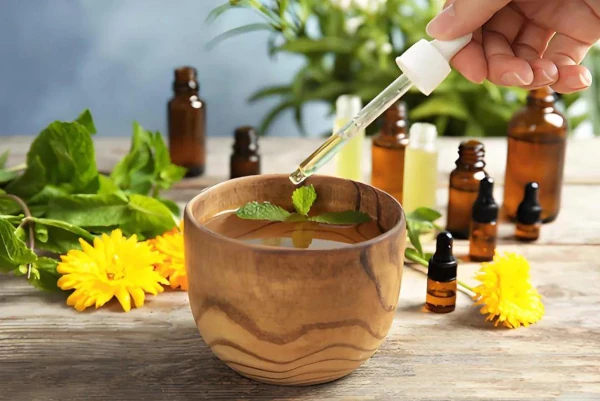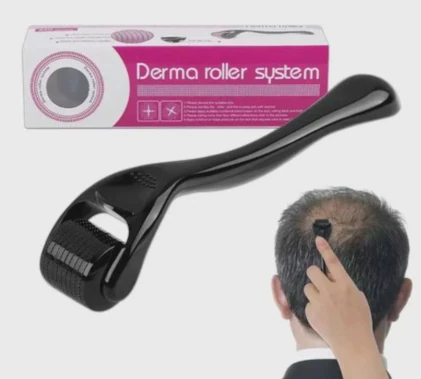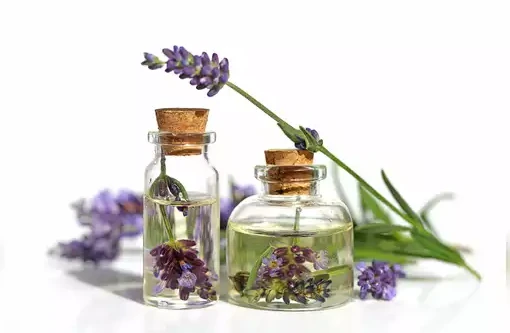Six Potent Essential Oil and Carrier Oil Combinations for Fighting Hair Loss
Here are six potent essential oil and carrier oil combinations for hair growth, scalp health, and nourishment. Each blend targets specific hair concerns and uses scientifically backed oils for the best results. Considering there are so many kinds of essential oils on the market [1] and sometimes it’s difficult to find the exact effective one for your hair condition, here we list several most used and proved combinations for your reference. Only the first combo will be discussed in detail here, since the other almost follow the same steps.
1. Rosemary Oil + Castor Oil


Why Castor Oil is Excellent for Hair Growth:
Castor oil is not classified as an essential oil, however it is widely used in hair care as carrier oil for its natural ability to:
- Stimulate blood flow to the scalp.
- Provide nutrients like ricinoleic acid, which strengthens hair roots.
- Lock in moisture, preventing breakage and promoting a healthy scalp environment.
How Castor Oil Complements Essential Oils:
- It can be combined with essential oils (e.g., rosemary or peppermint) to enhance scalp penetration and provide additional benefits. For example:
- Mix 2–3 drops of essential oil with a tablespoon of castor oil.
- Massage into the scalp for 5–10 minutes.
How to Use Castor Oil with Rosemary Oil for Hair Growth
Combining castor oil with rosemary essential oil creates a potent blend to stimulate hair growth, strengthen hair, and promote scalp health. Here’s a step-by-step guide:
What You’ll Need:
- Castor Oil: 2 tablespoons (use cold-pressed, organic castor oil for best results).
- Rosemary Essential Oil: 3–5 drops.
- Carrier Oil (Optional): 1 tablespoon of a lighter oil like jojoba, coconut, or almond oil (to dilute castor oil’s thickness).
- Bowl: To mix the oils.
- Towel or Shower Cap: To wrap your hair after application.

Instructions:
Step 1: Prepare the Oil Blend
- In a bowl, combine 2 tablespoons of castor oil with 3–5 drops of rosemary essential oil.
- If castor oil feels too thick, add 1 tablespoon of a lighter carrier oil like jojoba or coconut oil.
Step 2: Warm the Blend (Optional)
- Place the oil blend in a small bowl of warm water to gently heat it.
- Ensure it’s just warm to the touch, not hot, as overheating can damage the essential oil’s properties.
Step 3: Apply the Oil
- Part your hair into sections for even application.
- Using your fingertips, apply the oil to your scalp and roots, massaging gently in circular motions for 5–10 minutes.
- This boosts blood circulation and helps the oil penetrate deeper.
- Spread any remaining oil along the length of your hair to nourish and protect it.
Step 4: Let It Sit
- Cover your hair with a shower cap or wrap a towel around your head to trap heat, enhancing absorption.
- Leave the oil on for at least 1–2 hours or overnight for deep conditioning.
Step 5: Rinse and Shampoo
- Wash your hair thoroughly with a mild shampoo to remove the oil.
- You may need to shampoo twice if the castor oil is particularly thick.
- Follow up with a conditioner if needed.
Frequency of Use:
- Use this treatment 1–2 times a week for optimal results.
- Consistency is key; expect to see improvements in hair health and growth within 2–3 months.
Benefits of This Blend:
- Castor Oil: Strengthens hair shafts, locks in moisture, and provides fatty acids to nourish the scalp.
- Rosemary Oil: Stimulates hair follicles, improves blood circulation, and encourages growth.
Tips for Best Results:
- Perform a patch test to ensure you’re not sensitive to rosemary oil.
- Avoid applying too much oil—it can weigh down your hair or make it greasy.
- Pair with a balanced diet, stress management, and a healthy hair care routine for enhanced results.
Note:
Castor oil is often discussed alongside essential oils for hair growth, but it isn’t classified as an essential oil. Here’s the key difference between essential oil and castor oil:
- Essential Oils: Highly concentrated extracts from plants, typically distilled or cold-pressed, with potent active compounds and aromatic properties. They must always be diluted before use.
- Castor Oil: A carrier oil derived from castor beans. It is not distilled or volatile and lacks the concentrated nature of essential oils. Instead, it is used as a base to dilute essential oils for safe application.
2. Peppermint Oil + Coconut Oil
Benefits:
- Peppermint Oil: Stimulates blood flow to hair follicles and energizes growth.
- Coconut Oil: Deeply moisturizes, prevents protein loss, and strengthens the hair shaft.
How to Use:
- Mix 3–4 drops of peppermint essential oil with 2 tablespoons of coconut oil.
- Apply to the scalp and massage gently for 5 minutes.
- Let sit for 30 minutes to an hour before washing with a mild shampoo.
Best For: Thinning hair or weak roots.
3. Lavender Oil + Argan Oil
Benefits:
- Lavender Oil: Promotes follicle health and reduces stress, which can cause hair loss.
- Argan Oil: Packed with antioxidants and fatty acids to improve elasticity and reduce breakage.
How to Use:
- Mix 4–5 drops of lavender essential oil with 2 tablespoons of argan oil.
- Apply to the scalp and hair ends, focusing on dry or damaged areas.
- Leave on overnight and rinse thoroughly in the morning.
Best For: Dry, frizzy, or brittle hair.
4. Tea Tree Oil + Jojoba Oil
Benefits:
- Tea Tree Oil: Clears dandruff and unclogs hair follicles by fighting microbial infections.
- Jojoba Oil: Mimics natural scalp oils, balancing sebum production and promoting scalp health.
How to Use:
- Mix 3–4 drops of tea tree essential oil with 2 tablespoons of jojoba oil.
- Massage into the scalp, focusing on dandruff-prone areas.
- Let sit for 30 minutes, then wash with a dandruff-friendly shampoo.
Best For: Oily or flaky scalps.
5. Cedarwood Oil + Sweet Almond Oil
Benefits:
- Cedarwood Oil: Improves circulation to the scalp and strengthens hair follicles.
- Sweet Almond Oil: Rich in vitamins E, D, and biotin to nourish and condition hair.
How to Use:
- Mix 4–5 drops of cedarwood essential oil with 2 tablespoons of sweet almond oil.
- Apply from scalp to hair ends, massaging gently.
- Leave on for 1–2 hours, then rinse.
Best For: General hair strengthening and scalp nourishment.
6. Clary Sage Oil + Olive Oil
Benefits:
- Clary Sage Oil: Reduces inflammation and strengthens hair, minimizing breakage.
- Olive Oil: Deeply hydrates and protects the hair shaft with antioxidants and fatty acids.
How to Use:
- Mix 3–4 drops of clary sage essential oil with 2 tablespoons of olive oil.
- Warm the blend slightly and apply evenly across the scalp and hair.
- Leave on for an hour or overnight before shampooing.
Best For: Weak, dry hair prone to split ends.
Tips for All Combos:
- Patch Test: Always test new blends on a small area of skin before full application.
- Heat Option: Warm the oils gently to enhance absorption, but avoid overheating.
- Consistency: Use treatments 1–2 times a week for visible results over time.
- Add-ons: Consider adding vitamin E oil (1–2 capsules) to boost antioxidant properties.
These combinations can be customized to suit your needs.
References:
[1]: 20 Essential Oils for Hair Growth: Benefits, Science, and Application



